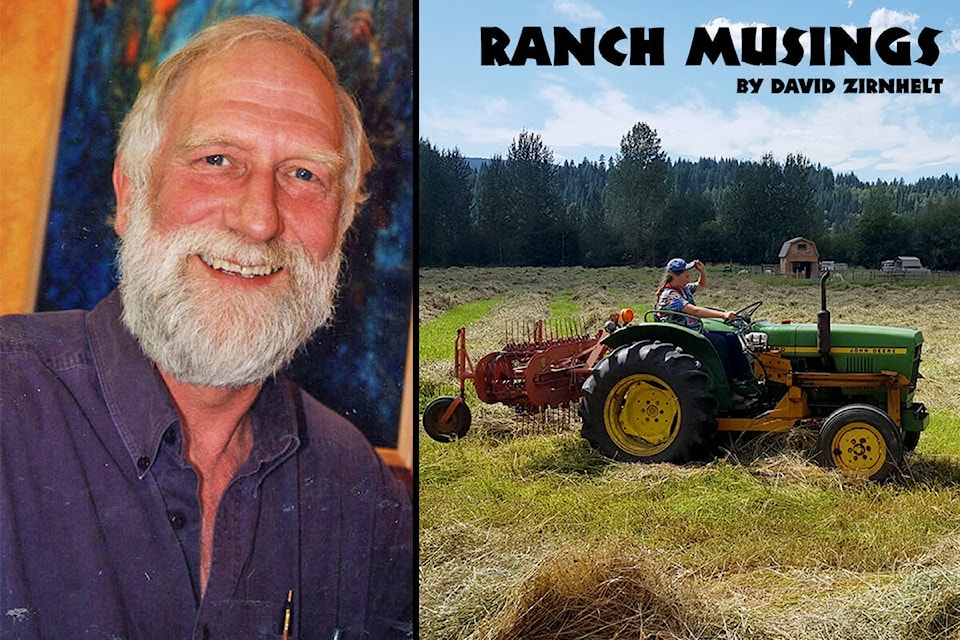By David Zirnhelt
Ranch Musings
Recently, the professional agrologists association presented an on-line seminar with a proponent of virtual fencing for cattle on open pastures.
Essentially one needs cellphone coverage of the area to be pastured, an investment (plus or minus) $200 for each cow’s collar and a good computer at home base.
The idea is that if a cow strays from the area set out on the computer-based map they will receive a small shock, not unlike the training collars used for dogs.
Experiments are ongoing in the western U.S. and in Canada. The BC Cattlemen are involved in the testing of certain equipment as is Thompson Rivers University in Kamloops.
The presenter to this seminar which gives professional development credits to Professional Agrologists was working out of the northwest U.S. with trials in the lower Okanagan of B.C.
The economics of this technology shines if you ranch in an area where recent wildfires have taken out the fences which control the drift of cattle. Barbed wire fencing costs around $20,000 per mile. Many miles are necessary to fence a range unit.
Should a cell tower for the purpose of virtual fencing be required the cost quoted was $12,000 (US) for a mini tower. The home computer puts out the signal to the tower and the tower will contact any cows within range.
The proponents conceded that barbed wire is best for perimeter fencing, however for any cross-fencing for riparian protection or other areas where cattle should be excluded (archeological sites), this system excels. Temporary physical electric fencing is not necessary for virtual fencing.
If ever there was a piece of technology which might allow improved grazing practices, I think this is it.
Currently the big weakness for those of us in the hilly parts of B.C. is the lack of adequate cell coverage.
Apparently, in Northern Washington, Idaho and Montana and the lower Okanagan from Osoyoos to Kelowna, perhaps beyond the trials is working out successfully.
The case was made by one of the suppliers of the technology that it is cheaper to install a virtual fencing system than it is to rebuild miles and miles of barbed wire drift fence.
I am looking forward to published results of the demonstrations and finding out if this might help keep cattle off the public highways.
